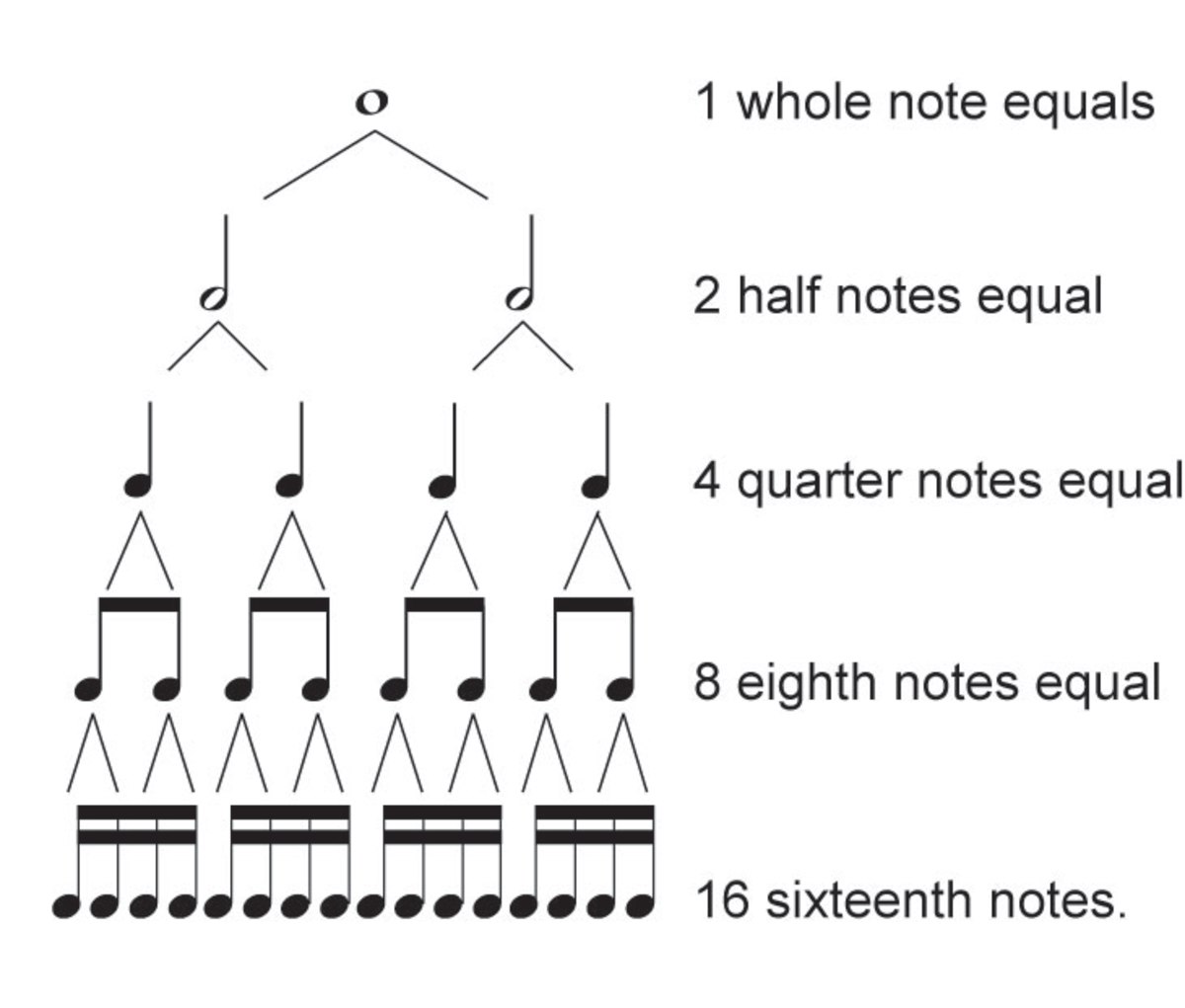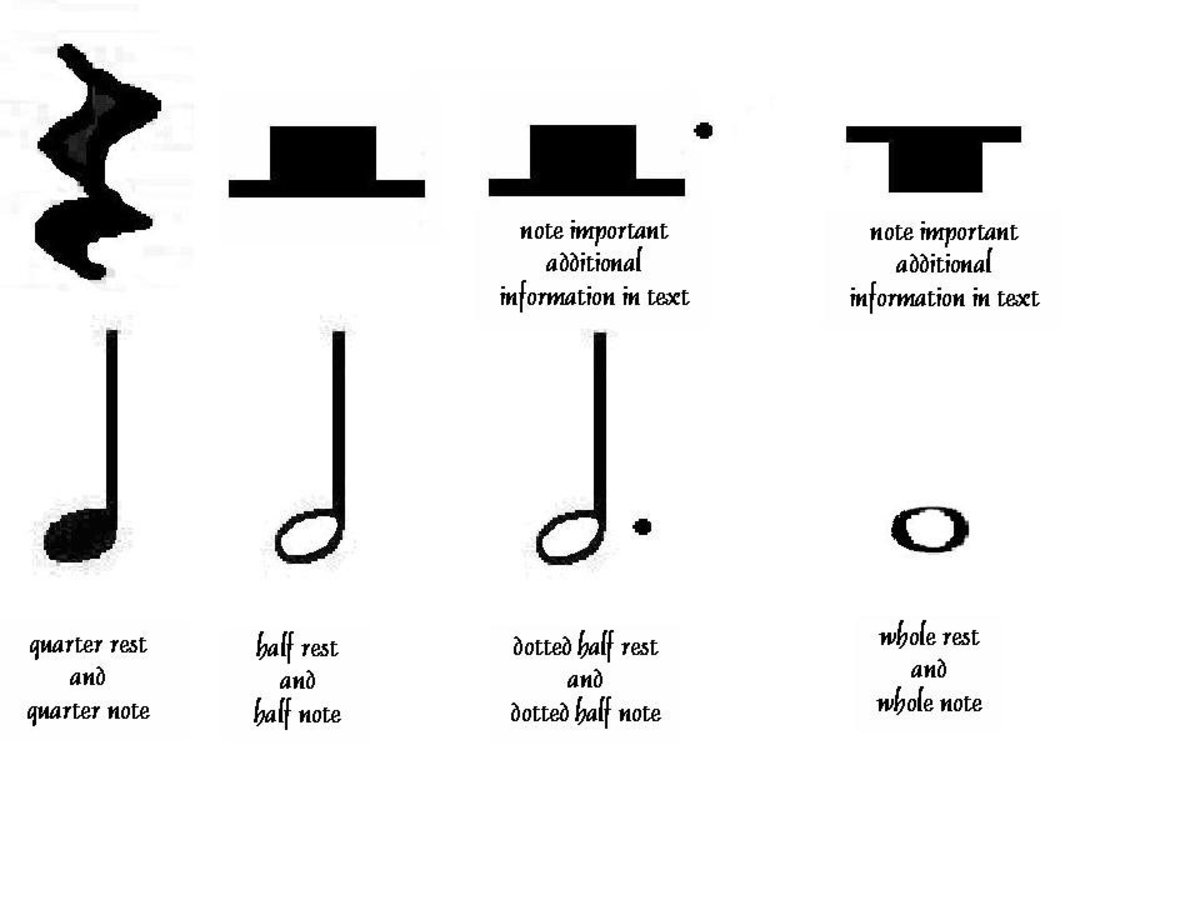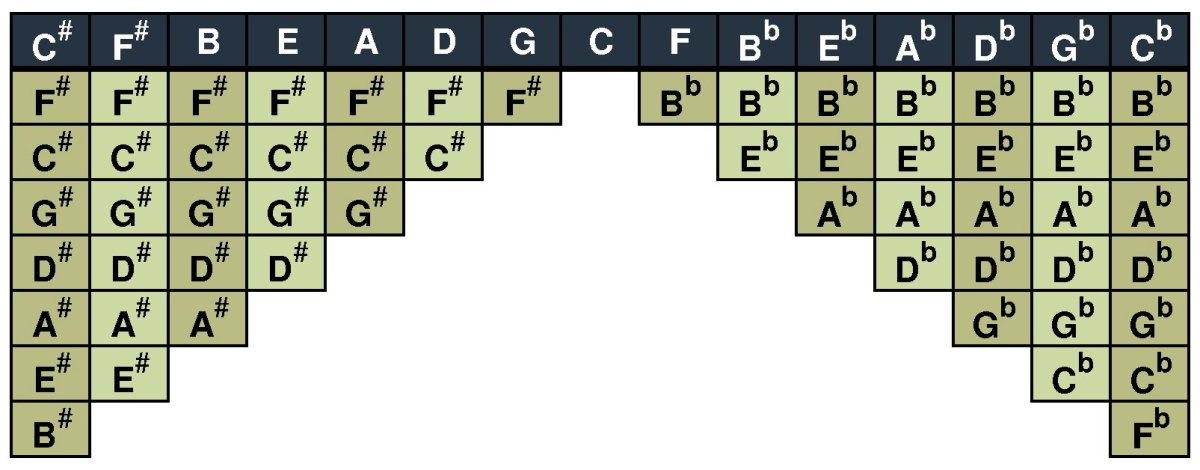Reading Rhythm in Music III: A Summary of Counting Methods, Including the Kodaly Method
Various Methods of Counting
This Hub presents and describes several different methods for counting the beat in music. No one method is superior to another. The method that is best is the one that will help the student learn how to translate printed rhythm into performed rhythm accurately and musically, and that method may vary from one musician to another. These methods are listed in order beginning with those that seem to work best with younger or less experienced students and moving on to those that seem to work best with more experienced students and/or performing musicians.
Method I – Suzuki-based
Although I am not a Suzuki teacher and have not had the appropriate training, I have heard and read that young children are taught basic beats with familiar words. The quarter note is represented by “blue” and so a steady beat would be spoken as
blue blue blue blue
.
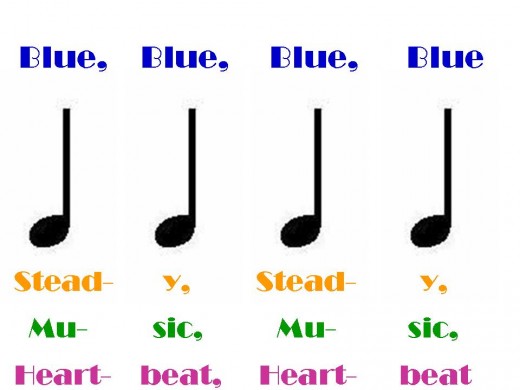
In Other Words
Method II – Other words
Some students catch the feel of the beat by hearing familiar words spoken with a musical rhythm. This method may need to be presented by a teacher or another musician, so that the words will be spoken with even rhythm, rather than in the somewhat clipped, stop-and-go fashion of everyday speech. But if you think about the chant examples from “Rhythm in Music, Part II,” you can try some of the following words to help represent the basic beat. Speak them slowly, emphasizing each syllable, and keeping the pace even. Try tapping your foot with each syllable. Keep a steady pace.
Stea – dy, Stea – dy, Stea – dy, Stea – dy
/ / / / / / / /
Mu - sic, Mu - sic, Mu - sic, Mu - sic
Heart-beat, Heart-beat, Heart-beat, Heart-beat
If these words don’t quite connect, think of a crowd at a ball game yelling “Defense!” They will probably yell it in some type of steady beat, most likely in one of these two patterns:
/ / / / | / / / / |
DE- fense! (wait - wait) DE- fense! (wait - wait)
OR
/ / / / | / / / / |
(wait - wait - wait) de - FENSE!! (wait - wait) de -
/ / / / | /
FENSE!! (wait - wait) de - FENSE!
These two patterns differ from one another in the position of the accent, the spot where the strongest pulse or beat occurs.
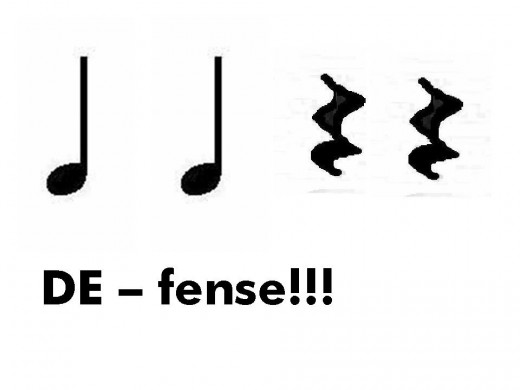
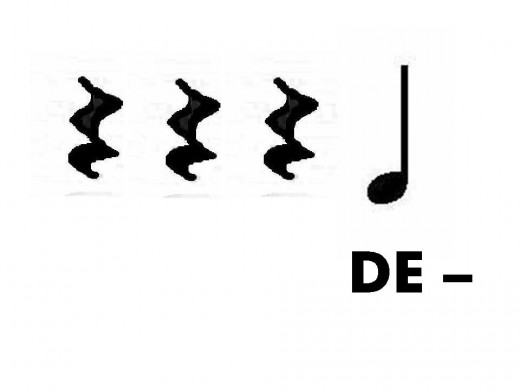
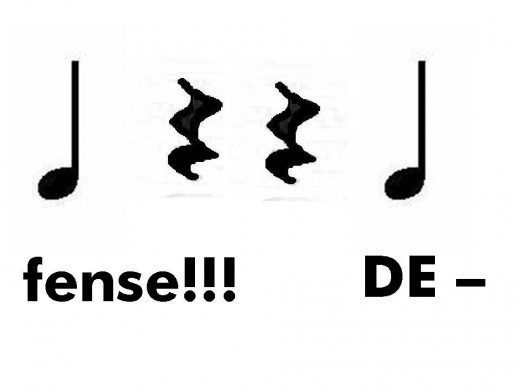
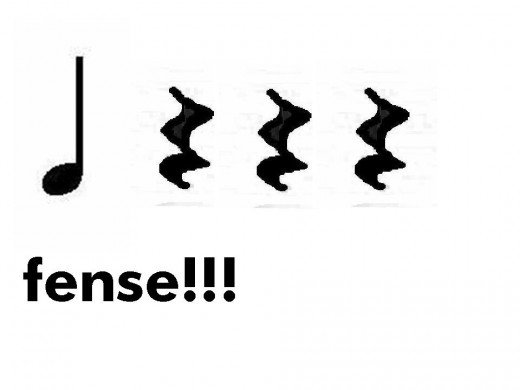
Method III – Kodaly-based
A great method for counting different values of notes is being taught in many elementary schools today. For the basic steady beat, the students say “Tah.” (Syllables that are used for other values of notes will be explained later.)
Tah Tah Tah Tah Tah Tah Tah Tah
/ / / / | / / / /
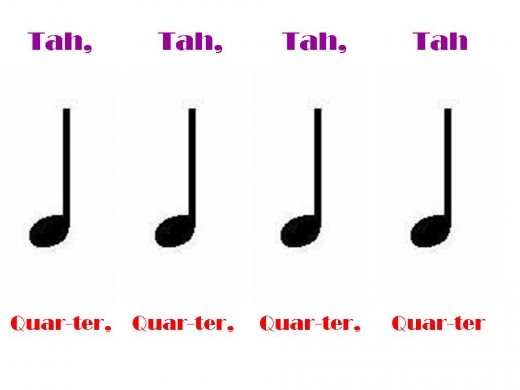
Method IV – Naming the Note-Value Names Rhythmically
I have learned from piano method books that some students (especially younger ones) are helped by having the name of the note (value) chanted rhythmically while they watch and follow the printed music. This helps them to associate the name of the note with the way it looks and also with the pulse it receives. With the quarter note, it is the first syllable of the name that occurs on the beat, and the second syllable can be felt as a half-beat subdivision.
Quar-ter, Quar-ter, Quar-ter, Quar-ter, Quar-ter, Quar-ter, Quar-ter, Quar-ter
/ / / / | / / / /
Method V – Note-Values as Specific Numbers
This is not quite the same as the “traditional style” of counting, but it helps to lay the groundwork for it. That is, each note represents a specific number of beats (or a specific portion of a beat), and so the value of the notes can be chanted to keep the time or the beat. So, for two groups of quarter notes, we could say
One One One One One One One One
/ / / / | / / / /
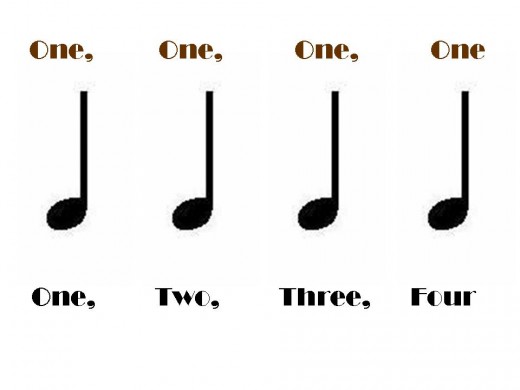
Tradition...... Tradition!
Method VI – Counting Numbers in Sequence
For many students who have learned in traditional methods, this is THE way to count. It can be quite helpful, especially when dealing with a group of musicians, because it can provide a common language for counting. But for younger students, it may be too confusing at first to be helpful. In this method, the beats are counted off in sequence, and then the numbers start over again with “one.”
One Two Three Four One Two Three Four
/ / / / | / / / /
It is probably preferable to use just one style of counting with a specific student, and to use the style that works best for that student once it is identified. But it can be confusing (for the teacher too) if a teacher tries to switch back and forth between counting methods from one student to another. Still, students are likely learning to count one way at school, and that may be different from the method used in private music lessons. As a result, the use of more than one counting method with a given student might actually help them to translate and transfer what is taught in one location to the lessons learned elsewhere. And it may also help them to understand that a counting method is a matter of feeling the beat, not just learning mathematical fractions.


